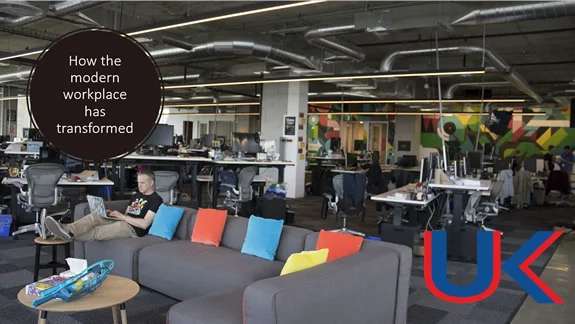How The Modern Workplace Has Transformed Itself

It’s easy to take the various conveniences and freedoms of the modern workplace for granted. Particularly if you’ve only recently joined the workforce, it can be hard to imagine the workplace of yesteryear.
But what have been the biggest changes to the modern workplace over the past 20 years or so? Prior to the turn of the new millennium, what kinds of conveniences we now take for granted were predominantly out of the equation?
Working remotely
For one thing, remote working, aka the virtual workplace, was practically unheard of just a few decades ago. Today, it’s estimated that around 30% of the entire work force has worked remotely at some point or another. Modern technology has transformed every device with a working Internet connection into a fully functional office suite.
Frequent job changes
The vast majority of employees are always on the lookout for a bigger and better deal. In times gone by, it was the norm for people to stay with the same company for 30 or 40 years before leaving with a gold-plated watch and a decent pension. These days, it’s the norm for people to stick with the company for no more than five years before searching for greener pastures.
Equality and diversity
Particularly in the United Kingdom and the United States, there’s been a gradual yet radical adoption of workplace equality and diversity policies. Rather than simply encouraging workplace diversity, official government policy has made it a legal requirement to champion diversity and equal opportunities. Discrimination in any form is no longer tolerated and is considered abhorrent.
Flexible dress codes
Some of the world’s biggest and most successful companies have acknowledged the fact that you don’t necessarily have to dress in a stiff power suit to do a good job. Enormous enterprises like Google encourage their workforce to express their personalities and individuality, wearing pretty much anything they want to wear to work. Piercings, tattoos, and gravity-defying hairstyles are all part and parcel of the modern office experience.
Employee input
It may be hard to believe that there was once a time when the prospect of any lower-level member of the workforce communicating directly with ‘the boss’ would have been out of the question. particularly if said employee wanted to make a rather outlandish suggestion or bring up a grievance of some kind. Today, employees at all levels are actively encouraged to share their thoughts and opinions with their superiors. Communication in general in the average workplace has transformed beyond recognition over recent years.
Transparency
No longer can an organisation expect to get away with operating in a shroud of secrecy. Company policies, salaries, benefits, promotion opportunities, and organisational performance—extensive efforts are made to keep all employees in the loop. The idea is that by ensuring everyone is on the same page, everyone takes equal pride in their work and performs better accordingly.
Availability
Even as recently as the mid-1990s, it was comparatively rare for anyone other than an executive to carry a mobile phone. Today, it’s almost unheard of for anyone not to carry a mobile phone. The result of this is the near-constant availability of workers at all levels on a 24/7 basis. The ability to contact any person from any place in the world at any time has radically transformed the way the world does business.
General workplace culture
Last but not least, the culture of the modern workplace embraces motivation, satisfaction, and enjoyment at an unprecedented level. Businesses worldwide are acknowledging the fact that when employees are happy to come to work, they perform better. Flexible working hours, a relaxed working environment, stocked kitchens, pool tables, coffee machines, and so on—all have an enormous impact on employee motivation and retention. It’s taken some time, but it’s now acknowledged that the most effective way to motivate workers is to create an enjoyable working environment, not simply force them to do the job.
